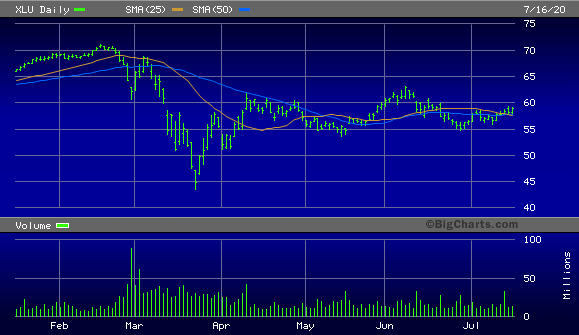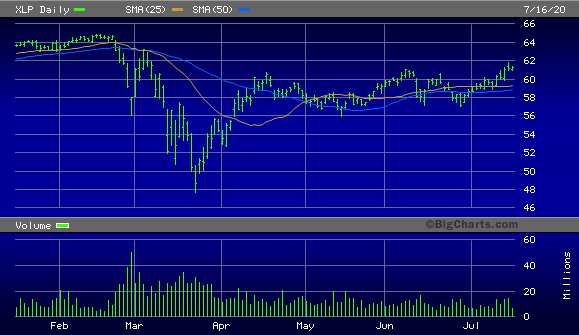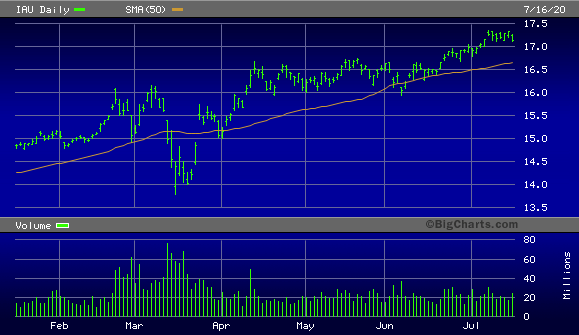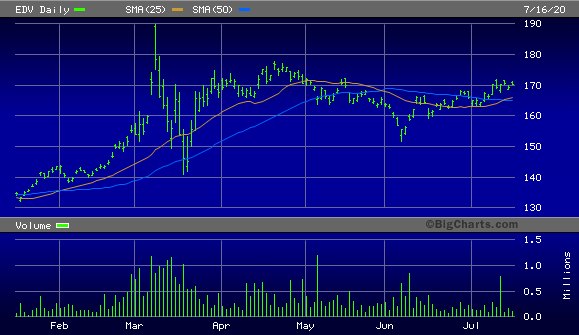You’re probably familiar with the old Wall Street adage that says “bull markets climb a wall of worry.” This bromide has certainly been proven since the U.S. stock market bottomed in March, and there is currently no shortage of things for investors to worry about, suggests Clif Droke, contributing editor to Cabot Wealth.
But as long as the market’s technical backdrop remains strong, the bull should be able to feed off this worry (which typically creates a rapid pile-up in short interest that can quickly ignite short-covering rallies).
But what happens when the market’s internal condition eventually begins to weaken and those widespread worries show no sign of diminishing?
This was precisely the condition that precipitated the late-February sell-off in the major averages, as investors’ fears over the spreading coronavirus served to fuel the selling pressure, which only intensified in March.
Here, we’ll discuss the double-edged sword of worry as it pertains to the stock market and how you can hedge your portfolio against another fear-driven market decline. The bulls of Wall Street command the field right now, so it’s too early to think about selling stocks. But it’s never too early to prepare a strategy to protect your portfolio from the next market correction.
One of my favorite indicators for gauging the internal strength or weakness of the broad market is the number of stocks making new 52-week highs and lows.
The new highs-lows reflect the incremental demand for equities, and in a healthy market environment, there should be fewer than 40 stocks making new 52-week lows on a daily basis. New 52-week highs, by contrast, should ideally outnumber new lows by a ratio of 3:1 or greater.
For the last few months, the daily number of stocks making new lows on both the NYSE and the NASDAQ has been well below 40, telling us that selling pressure has been virtually non-existent. But sooner or later, the new lows will begin to increase while the new highs will contract.
Once the new lows rise above 40 for several consecutive days, you’ll know it’s time to begin “pulling in the horns” by trimming laggards from your portfolio, raising protective stops on existing long positions and looking at potentially attractive defensive stocks and ETFs to rotate into.
The danger of a market in which new 52-week lows are above 40 (and rising) is that stocks in general become far more vulnerable to negative headlines and worries.
While stocks typically ignore bad news and feed on fear during a strong market environment, in a market characterized by internal weakness, investors’ fears can become self-fulfilling as selling begets more selling (with no one interested in buying the dips).
Fear, then, is a double-edged sword that can be beneficial for stocks in an internally strong environment, but detrimental to stocks when the market’s backdrop is technically weak. When the new 52-week lows are steadily increasing, fear is most likely to drive stock prices lower.
One of the first things you should do when the market starts showing signs of internal weakness is to look for areas of the market which were ignored during the rally phase.
Underachieving sectors and industry groups often (though not always) become the new leaders once a market correction has ended as institutional investors typically seek out-of-favor stocks to rotate into.
And if these ignored sectors happen to be defensive in nature, it increases the odds that such stocks will rally during—or immediately after—a market downturn.
One such group that has been largely ignored during the latest phase of the bull market is utilities. Utility stocks have a long-established history of being among the most defensive stocks since we all need water, gas and electricity regardless of the business climate (even in a recession).
Utility companies have the added attraction of benefiting from the lower interest rates that are prevalent right now. I expect that utility stocks will begin outperforming the major averages once we’ve entered another down phase in the market.
One way to have exposure to the utilities without the heightened volatility risk of individual stock ownership is through the Utilities Select Sector SPDR ETF (XLU).
This ETF also pays a dividend (current yield 3.3%) and has been stable since the March correction low, fluctuating between the $55 and $63 levels since April. I would consider a close above $63 as a sign that money is rotating back into utilities, and that utilities as a sector will likely begin outperforming on a sustained basis.

Another traditionally defensive area of the market is consumer staples. Consumer staples have also underperformed in this new bull market, though they typically perform well in a recession; after all, people will always need to buy things like shampoo, toothpaste and toilet paper.
The staples also tend to outperform when high-flying leaders—like the big tech names—come under selling pressure. For that reason, I recommend keeping an eye on the Consumer Staples Select Sector SPDR Fund (XLP).
Although XLP has underperformed the S&P 500 Index in recent months, the fact that consumer staple stocks have recently shown signs of life could mean that the “smart money” is rotating into this overlooked segment. I’d regard a breakout above the 62 level in XLP as confirmation that a new bullish phase has begun for the staple stocks.

Another way to benefit from a fear-driven market is to watch the asset class that has always historically served as a hedge against a weak stock market. I’m referring, of course, to gold, which typically benefits when worries abound. Accordingly, gold is one of the ultimate safe haven assets which investors should consider owning in a fear-driven market.
While it’s commonly believed that gold always trades inversely to the stock market, that hasn’t been the case in recent years as both gold and equities have simultaneously risen for extended periods (including the most recent rally, which began in March).
The reason for gold’s persistent strength is plainly evident in the daily news headlines, which continue to reveal spiking coronavirus cases in the U.S. There are also lots of geopolitical risks and worries over the strength of the global economy. With such worries abounding, gold should have a built-in psychological support for months to come.
One of the best ways to own gold is through a low-priced ETF like the iShares Gold Trust (IAU), which closely tracks the gold price and has shown relative strength since March. It bottomed before the benchmark S&P 500 after the coronavirus crash and is trending above its psychologically significant 50-day line (see chart).

If the broad market enters another period of weakness, look for IAU to continue its relative outperformance versus the SPX as investors increasingly turn to the safety of the yellow metal.
A final consideration for a fear-driven market is U.S. Treasury securities, which are normally in high demand during periods of heightened stock market volatility. One of the best ETFs to own during such periods is the Vanguard Extended Duration ETF (EDV).
This ETF tracks the performance of zero-coupon extended duration Treasury securities, thus providing exposure to the strong Treasury bond market. T-bonds have benefited from safety-related demand in recent years, and it’s not likely this demand will diminish anytime soon.

The ETFs discussed here should be able to benefit from a fear-driven market environment. At the next sign of broad market weakness (characterized by an increasing number of stocks making new 52-week lows), investors should expect these defensive ETFs to show relative strength compared to the major averages.





















